Learn Performance Marketing (Google Ads, Meta Ads, Email Marketing And Lead Generation)
- Become a Performance Marketing Expert – From Basics to Advanced Ad Strategies
- Job-Ready Paid Ads Skills Taught by Industry Professionals
- Hands-On Training in Google Ads, Facebook Ads, Instagram Ads & LinkedIn Ads
- Create Real Campaigns, Analyze Live Dashboards, and Optimize for ROI
- Perfect for Students, Freelancers & Working Professionals
Weekday & Weekend Batches Available
Starts from
18 August, 2025
Duration 25 days
Enquire Now
Demo Lecture For Online & Classroom ! Hurry Up
Recruiters for SEO Learners
Performance Marketing Pro Program Highlights
Industry Expert-Led Training Sessions
Learn directly from certified performance marketers through live sessions, real campaign walkthroughs, and platform-specific strategies (Google, Meta, LinkedIn). Get real insights into what works — from lead generation to ROI optimization.
Hands-On Google, Meta & LinkedIn Ads Training
Master high-converting ad campaigns on:
• Google Ads – Search, Display, YouTube, Shopping
• Meta Ads – Facebook & Instagram Ads Manager
• LinkedIn Ads – B2B audience targeting & conversion
Understand audience research, bidding strategies, A/B testing, ad creatives, and more — with live dashboards and budget simulations.
Career Assistance & Placement Support
We guide you through your digital marketing career journey:
• 1:1 Resume Building & LinkedIn Optimization
• Mock Interviews with Feedback
• Access to 100+ Hiring Partners
• Job Boards & Freelance Project Referrals
Master Industry-Standard Tools
Work with essential tools every performance marketer uses:
• Google Ads Manager
• Meta Business Suite
• LinkedIn Campaign Manager
• Google Analytics 4
• SEMrush / Ahrefs
• UTM Builder, Canva, & More
Build a Powerful Project Portfolio
Apply what you learn with real-time projects such as:
• ROI-driven Ad Campaigns
• Lead Generation Funnels
• E-commerce Conversion Strategies
• B2B Targeting Campaigns
• Retargeting & Remarketing Projects
Perfect to showcase on your resume, Upwork profile, or LinkedIn portfolio.
Collaborative Peer Network
Join a community of digital learners, freelancers, and working professionals.
• Share campaign ideas
• Get peer feedback
• Work on team projects
• Stay updated with latest trends
Get Certified in Performance Marketing
Upon completion, earn a recognized certification to validate your skills and boost your credibility in job interviews, freelance pitches, and LinkedIn visibility.
Performance Marketing Course Curriculum
Google Ads
📦 Google Smart Campaigns
1. Introduction to Smart Campaigns
● What are Smart Campaigns?
● Key differences from Standard Google Ads
● How automation works behind Smart Campaigns
2. Why Use Smart Campaigns?
● Ideal scenarios for Smart Campaigns
● Benefits for small businesses and local services
● Efficiency vs. control trade-offs
3. Types of Smart Campaigns
● Local Smart Campaigns (for physical locations)
● Smart Display Campaigns
● Smart Shopping Campaigns (overview, if applicable)
● Smart Campaigns with Call-Only objectives
4. Setting Up a Smart Campaign
● Linking Google My Business (GMB)
● Selecting business goals (calls, visits, actions)
● Writing effective ad copy within Smart constraints
● Adding keyword themes (vs traditional keywords)
● Setting location targeting and business hours
5. Who Should Use Smart Campaigns?
● Use cases: Startups, SMBs, solopreneurs, offline retailers
● Limitations for advanced advertisers
● Transitioning from Smart to Expert Mode (Standard Campaigns)
6. Reporting and Insights
● Interpreting performance metrics in Smart Campaigns
● Conversion actions tracking
● Accessing and understanding search phrases reports
● Using Google Ads mobile app for monitoring
🔧 Advanced Topics (Recommended Additions)
● Troubleshooting Smart Campaign issues (disapprovals, poor performance)
● Comparing performance: Smart Campaigns vs. Manual Campaigns
● Case studies: Local service businesses and their Smart Campaign ROI
● Budgeting and pacing strategies
● A/B testing ideas even within Smart limitations
🔍 Google Search Advertising
1. Fundamentals of Search Advertising
● Introduction to the Google Search Network|● How search ads work: Auction, keywords, and relevance
● Difference between Search Ads and Display/Video Ads
2. Campaign Structure & Setup
● Importance of Quality Score & Ad Rank (CTR, relevance, landing page exp.)
● Structuring your campaign: Campaign → Ad Groups → Ads → Keywords
● Setting campaign goals (sales, leads, traffic)
● Choosing campaign type (Standard, Dynamic, Call-Only, Local)
3. Campaign Settings & Targeting
● Networks (Search partners, Display opt-in)
● Location, Language, Devices, Ad Schedule
● Budget and bidding options (Daily budget vs. Shared budget)
● Ad rotation and delivery methods
4. Keyword Strategies
● Keyword Planner tool walkthrough
● Keyword match types (Broad, Phrase, Exact, Negative)
● Search Intent and keyword categorization
● Competitor keyword analysis
● Long-tail vs short-tail keyword strategies
● How to use Search Term Report for refinement
● Negative keyword strategy to reduce wastage
5. Ad Creation
● Types of ad formats (Expanded Text Ads, Responsive Search Ads)
● Writing compelling ad copy: Headline formulas, CTAs
● Using Keyword Insertion, Countdown Timers, and Dynamic Text
● Leveraging Ad Extensions:○ Sitelinks
○ Callouts
○ Structured Snippets
○ Call Extensions
○ Price, Promotion, App extensions
6. Bidding & Budgeting
● Types of Bidding Strategies:
○ Manual CPC
○ Enhanced CPC
○ Maximize Clicks
○ Target CPA
○ Target ROAS
○ Maximize Conversions/Conversion Value
● Smart Bidding overview and AI-powered optimization
● Bid adjustments (Device, Location, Time, Audience)
● Funnel-based bidding strategy
7. Performance Tracking & Optimization
● Conversion tracking setup and importance
● Understanding auction insights report
● Metrics to monitor: CTR, CPC, Quality Score, Conversion Rate, ROAS
● A/B testing for ad variations
● Using GA4 with Google Ads for insights
● Optimization best practices: Budget shifts, ad copy testing, bid changes
8. Advanced Strategies
● Using Google Ads Scripts for automation
● Dynamic Search Ads (DSAs): Setup and benefits
● Competitor Ads benchmarking using tools (SEMrush, SpyFu)
● Integration with CRM/lead tracking tools
● Multi-location ad strategy for local businesses
Google Display Advertising – Expanded Course Content
1. Introduction to the Display Network
● What is the Google Display Network (GDN)?
● Differences between Display vs. Search Network
● Reach and inventory of Display Ads
● Benefits of using Display for brand awareness, retargeting, and product exposure
2. Targeting Options in Display Network
● Contextual Targeting (Keywords, Topics, Placements)
● Audience Targeting:
○ Affinity Audiences
○ In-Market Audiences
○ Custom Audiences (Intent and Affinity)
○ Remarketing and Similar Audiences
● Demographic Targeting: Age, Gender, Parental Status, Household Income
● Device & Location Targeting
3. Ad Formats in Display
● Responsive Display Ads (RDA): Auto-scaling assets
● Uploaded Image Ads (HTML5, GIFs, JPGs)
● Video Ads on Display Network (Lightbox, Outstream)
● Interactive Rich Media Ads
● Native-style display ads
4. Setting Campaign Goals
● Awareness, Consideration, Conversion campaign objectives
● Selecting KPIs: CTR, Viewable Impressions, CPM, CPA, ROAS
● Aligning creatives with business goals
5. Display Ads vs. Video Ads
● When to use static vs. motion creatives
● Use cases for combining Display and YouTube campaigns
● Engagement metrics comparison
● Retargeting through both channels
6. Campaign Settings
● Standard vs. Smart Display Campaigns
● Optimized targeting (audience expansion)
● Frequency capping
● Ad schedule and delivery method
● Budget and bid settings
7. Types of Bidding Strategies
● Manual CPC and Enhanced CPC
● Viewable CPM (vCPM)
● Maximize Conversions
● Target CPA (Conversion-based)
● Smart Bidding in Display vs. Search
8. Creative Strategy and Best Practices
● Design principles for banner ads: CTA, brand logo, value prop
● Best practices in image usage and font readability
● A/B testing ad creatives (headlines, images, CTAs)
● Localization of creatives for regional or language-based targeting
● Asset optimization for Responsive Display Ads
9. Analyzing Campaign Performance
● Using Google Ads UI and Google Analytics for performance insights
● Top metrics to monitor: CTR, Impressions, Viewable Rate, Conversions, Bounce Rate
● Attribution modeling: last-click, data-driven, position-based
● Placement performance reports (which websites showed the ad)
10. Campaign Optimization
● Excluding low-performing placements or topics
● Refining audience targeting based on engagement
● Creative refresh strategy (when to change ads)
● Budget reallocation based on ROAS
● Conversion tracking and pixel setup
11. Reporting & Insights
● Setting up custom reports in Google Ads
● Using Google Data Studio for interactive dashboards
● Reporting by device, demographic, and location
● Interpreting assisted conversions from Display Ads
● Integrating display campaign data with GA4
YouTube Advertising – Expanded Course Curriculum
1. Types of Ads on YouTube
● Skippable In-Stream Ads
● Non-Skippable In-Stream Ads
● Bumper Ads (6-second unskippable)
● Overlay Ads (text/banner on videos)
● Display Ads (beside video player)
● Sponsored Cards
● Video Discovery Ads (appear in search and homepage)
2. Types of Video Ads
● Awareness-focused ads (TrueView for Reach)
● Consideration-focused ads (TrueView for Action)
● Conversion-driven ads (Performance Max with video assets)
● App promotion ads
● Short-form video ads (YouTube Shorts Ads)
3. Skippable vs. Unskippable Ads
● Advantages & drawbacks of each
● Engagement vs. reach trade-off
● When to use based on campaign goals
● Metrics: View-through rate (VTR), Cost-per-view (CPV), CPM
4. Bidding Strategies
● CPV (Cost-per-view)
● CPM (Cost per 1000 Impressions)
● Target CPA (Cost per Acquisition)
● Maximize Conversions
● Target ROAS (for advanced campaigns)
● Smart Bidding in YouTube Ads
5. Campaign Settings and Features
● Campaign subtype selection (Awareness, Consideration, Action)
● Inventory type (Expanded, Standard, Limited)
● Exclusions: Content types, placements, devices
● Demographics and advanced audience targeting (Affinity, Custom Intent, In-market)
● Ad sequencing and storytelling
6. Campaign Optimization
● A/B testing: Video variations, CTA placements, thumbnails
● Thumbnail optimization for discovery ads
● Retargeting engaged viewers or channel subscribers
● Frequency capping for non-skippable formats
● Using audience insights for better segmentation
● Leveraging YouTube Analytics + Google Ads for tuning campaigns
7. Campaign Analysis and Reporting
● Key metrics: View Rate, Watch Time, CTR, CPV, Conversions
● Interpreting engagement graphs and heatmaps
● Cross-platform performance tracking (Desktop vs Mobile)
● Integrating GA4 with YouTube Ads
● Attribution modeling (view-through, click-through, assisted conversions)
Shopping Ads (E-Commerce Ads)
1. What are Shopping Ads?
● Definition and types (Standard Shopping, Smart Shopping, Performance Max with
product feed)
● Shopping Ads vs. Search Ads: Key differences
● Use cases for e-commerce and DTC brands
2. Who Can Do Shopping Ads?
● Eligibility criteria
● Business and website requirements
● Supported countries and industries
● Compliance and ad policies
3. Benefits of Shopping Ads
● Rich product visuals directly in SERPs
● Higher click-through rates for e-commerce
● Better qualified leads through product-specific targeting
● Mobile performance advantage
4. How Shopping Ads Work
● Auction system for product-based ads
● Role of product data, not keywords
● Dynamic ad creation from product feed
● Shopping campaign structure explained
5. What is a Google Merchant Center (GMC)?
● Overview of Merchant Center
● Features and tools (Product diagnostics, Performance reports)
● Linking GMC with Google Ads
6. Setting Up a Google Merchant Account
● Step-by-step account creation
● Domain verification and claim process
● Setting up shipping and tax settings
● Business information compliance
7. Importance of Product Feed & How to Create and Update It
● Required attributes: ID, title, price, availability, GTIN
● Optional but valuable fields: sale price, custom labels, mobile link
● Tools for feed creation: Google Sheets, Feed Rules, XML
● Feed upload methods: scheduled fetch, content API, manual upload
● Diagnosing feed errors and disapprovals
8. Setting Up Shopping Campaigns
● Campaign types: Standard vs. Smart Shopping vs. Performance Max
● Setting bids and budgets (manual or automated)
● Product group segmentation and filtering
● Custom labels for product grouping (e.g., margin, seasonality)
9. Campaign Analysis & Optimization
● Key metrics: ROAS, CTR, Impression Share, Conversion Rate
● Segmenting performance by device, product, time of day
● Adjusting product bids based on performance
● A/B testing product titles and images in the feed
● Using competitive metrics: Benchmark CTR, Auction Insights
● Leveraging Performance Max insights for advanced users
Mobile App Advertising
1. What are Universal App Campaigns (UAC)?
● Overview of UAC and how it differs from traditional ad campaigns
● Automation features (creative rotation, bidding, placements)
● Ad placements across Search, Display, YouTube, and Play Store
2. Who Can Run UAC?
● Requirements for advertisers (App on Google Play or App Store)
● Ideal industries and goals (installs, in-app actions, engagement)
● Compliance with Google Ads and Play Store policies
3. Setting Up the Campaign
● Campaign creation: objectives (Install vs. In-app action)
● Uploading creative assets: text lines, images, videos
● Selecting locations, languages, and budgeting
● Defining bidding strategy (CPI vs. CPA)
4. Features of UAC
● Machine learning optimization: how Google chooses assets and placements
● Creative asset report: evaluating what works
● Targeting based on user behavior and intent signals
● Optimization for install volume vs. quality (engaged users)
5. How to Increase App Installs Through Paid Campaigns
● Leveraging audience insights to drive installs
● Using custom audiences and lookalikes
● Best-performing ad formats (video vs. image)
● Pre-registration campaigns (for unreleased apps)
6. How to Promote Your App on Search, Display Network & Play Store
● Mobile app campaigns in Search: keyword optimization
● Display network targeting (affinity, custom intent, app categories)
● Play Store placement: organic + paid synergy
● App store listing optimization (ASO) best practices
7. Campaign Analysis and Optimization
● Key metrics: Cost-per-install (CPI), retention rate, in-app conversion
● Using Firebase or GA4 for in-depth insights
● Creative testing and rotation strategy
● Adjusting bidding and targeting for performance lift
8.Reporting
● Firebase vs. Google Ads conversion tracking setup
● Custom conversion events: purchases, registrations, levels unlocked
● Attribution windows and conversion delays
● Reporting with Funnel.io or Data Studio integration
Advanced Topics (Optional Modules)
● A/B testing with Google Experiments for app campaigns
● Deep linking and deferred deep linking
● Retargeting lapsed app users with Google Ads
● Integration with app analytics tools like Adjust, AppsFlyer, and Kochava
Remarketing
1. Remarketing vs Dynamic Remarketing
● Standard Remarketing: showing ads to past site visitors using static creative
● Dynamic Remarketing: showing ads with product or service details that visitors viewed
● Use-cases: lead generation vs. e-commerce
● Real-world scenarios and examples
● Data feed requirements and Merchant Center for dynamic ads
2. Setting up Remarketing Tags
● Overview of the Google Ads remarketing tag and how it works
● Installing global site tag (gtag.js) and event snippets
● Using Google Tag Manager (GTM) for scalable implementation
● Tag verification and troubleshooting issues
● Configuring tags for multi-page or single-page apps
3. Creating Remarketing Lists
● Types of remarketing audiences:
○ Website visitors
○ App users
○ YouTube viewers
○ Customer list uploads (CRM)
● Audience segmentation strategies:
○ Cart abandoners
○ Product viewers
○ Time-based inactivity windows
○ Page visit frequency and duration
● List duration and membership rules
● GDPR and consent management for audience lists
4. How to Create a Remarketing Campaign (Search, Display, and Video
Ads)
● Search Ads Remarketing (RLSA):
○ Adjusting bids for past visitors
○ Modifying keyword targeting
○ Combining intent + past behavior
● Display Remarketing:
○ Visual ad creative tips for returning users
○ Dynamic display ad templates and layouts
○ Using frequency capping and exclusions
● YouTube Remarketing:
○ Targeting viewers who interacted with your channel or videos
○ Crafting engaging video creative tailored to the funnel stage
○ Custom video audiences (skippers, viewers, subscribers)
🔧 Additional Advanced Modules (Optional)
● Cross-device remarketing strategies
● Remarketing through Performance Max and Smart Campaigns
● Multi-channel funnel setup: GA4 audience syncing
● Time decay strategies and bid adjustments
● Integrating 1st-party data with remarketing (CRM lists, HubSpot, Mailchimp)
📊 Tracking, Optimization, and Reporting
● Key KPIs: CTR, Conversion Rate, ROAS for remarketing
● Using GA4 to analyze remarketing audience performance
● A/B testing creatives and formats
● Attribution and assisted conversions from remarketing
Social Media Marketing
Facebook Marketing – Full Curriculum Breakdown
1. Introduction to Facebook Marketing
● Facebook History: Evolution from personal networking to business hub
● How the Facebook Newsfeed Works:
○ Facebook algorithm breakdown (Engagement, Relevance Score, Recency)
○ Key ranking signals: comments, shares, reactions
● Facebook for Business: Business suite, page vs. personal profiles
2. Facebook Page Optimization
● How to optimize a Facebook Business Page:
○ Profile setup, cover photo, call-to-action button, about section
● Custom Tabs:
○ What are they? How to use apps like Woobox or ShortStack
● Types of Facebook Groups:
○ Public, Private, and Secret – When and why to use each
● Profile vs. Page vs. Group:
○ Business use cases and content strategies
3. Content Strategy & Posting
● Types of Facebook Posts:
○ Image, text, carousel, video, poll, story, reels
● Facebook Post Best Practices:
○ Post length, timing, hashtags, visual hierarchy
● Canvas/Instant Experience:
○ Interactive mobile-first ad format; how to create immersive content
● Scheduling Tools:
○ Native scheduling, Meta Business Suite, Buffer, Hootsuite
4. Competitor Analysis & Planning
● Facebook Competitor Tools:
○ Facebook Ad Library, Pages to Watch, SEMrush Social
● Facebook Creator Studio:
○ Scheduling, insights, monetization features
● Facebook Sound Collection:
○ Copyright-free music and sound effects for content
● Planning a Content Calendar:
○ Monthly strategy, content buckets, template examples
5. Engagement & Insights
● Creating Engaging Posts:
○ Writing with emotion, CTAs, conversation starters
● Facebook Insights:
○ Reach, Engagement, People (Demographics), Page Views
● Facebook Audience Types:
○ Saved, Custom, Lookalike
6. Facebook Advertising
● Facebook Ads Manager vs. Business Manager
● Types of Facebook Ads:
○ Image, Video, Carousel, Collection, Instant Experience
● Remarketing on Facebook:
○ Retargeting via Pixel, custom audiences, and catalog
● Pixel Integration:
○ How to install via code or GTM, troubleshoot
● Tracking Conversions:
○ Standard events (purchase, lead, add to cart), custom conversions
7. Advanced Advertising Tactics
● Types of Facebook Audiences:
○ Custom (site visitors, app users, CRM), Lookalike, Geo-targeting
● Facebook Ads Best Practices:
○ A/B testing, audience overlap, creative fatigue
● Facebook Store Visits Campaigns:
○ Local ads, radius targeting, call/visit incentives
● Product Catalog & Shopping:
○ Setup via Facebook Commerce Manager
○ Integration with Instagram Shopping & tagging products in posts
● E-Commerce Integration:
○ Shopify, WooCommerce, BigCommerce integrations
Reporting and Optimization
● Analyzing key ad metrics: CTR, CPM, ROAS, Frequency
● Budget distribution tips: CBO vs. Ad Set level
● Ad breakdowns by age, device, placement
● Custom dashboards in Ads Manager
Instagram Marketing – Full Curriculum Breakdown
1. Foundation of Instagram Marketing
● Instagram History: From a photo-sharing app to a global marketing platform (launched
2010, acquired by Facebook in 2012).
● Why Instagram?:
○ 2B+ monthly users, high engagement rates, strong visual-first culture.
○ Ideal for B2C, influencers, lifestyle, fashion, travel, and eCommerce brands.
● Instagram Algorithm:
○ Signals: Interest, timeliness, relationship, frequency, following, usage.
○ Strategies to improve reach and engagement.
2. Setting Up for Business
● How to use Instagram for Business:
○ Switching to a business account.
○ Setting up contact info, industry category, and call-to-action buttons.
● Optimizing Business Profile (BIO):
○ Crafting a compelling bio (value + CTA).
○ Profile picture, link-in-bio tools (Linktree, Later, etc.).
3. Content Strategy
● Types of Posts on Instagram:
○ Feed posts (image/video), carousels, reels, stories, guides.
● Best Practices for Posts:
○ High-resolution images, storytelling captions, use of CTAs and hashtags.
● Branded Content:
○ Paid partnerships, branded tags, transparency for sponsored posts.
4. Instagram Stories & Engagement
● Instagram Stories:
○ Polls, quizzes, sliders, links (for verified accounts or via sticker).
● Instagram Story Highlights:
○ Categorizing evergreen content (e.g., reviews, FAQs, tutorials).
● How to Get Engagement via Stories:
○ Behind-the-scenes content, countdowns, questions.
5. Analytics & Performance
● Instagram Insights (Business Account only):
○ Reach, impressions, saves, profile visits, website clicks.
● How to check post, story, and audience performance.
6. Video Content on Instagram
● What is IGTV?:
○ Long-form vertical video (phased out, now part of general video).
● How to Optimize IGTV Videos:
○ Thumbnails, titles, descriptions, SEO tagging, subtitles.
● Instagram Reels:
○ Best length, viral hook strategies, audio trends, remix & duets.
7. Instagram Ads
● Types of Ads:
○ Feed ads, Story ads, Carousel ads, Reels ads, Explore ads, Collection ads.
● Pre-requisites to Do Ads:
○ Business account, linked Facebook page, Ads Manager setup.
● Instagram Ads Strategy:
○ Targeting by interest, custom audiences, lookalikes.
○ Split testing (creative, placement, audience).
○ Creative best practices (bold visuals, short copy, direct CTA).
8. Tools & Scheduling
● Creative Tools:
○ Canva, InShot, Mojo, Adobe Express for story/reel design.
● Scheduling Tools:
○ Meta Business Suite, Later, Buffer, Hootsuite.
📺 YouTube Marketing – Detailed Curriculum
1. Fundamentals
● Importance of YouTube
○ Second largest search engine after Google, over 2B logged-in monthly users.
○ Ideal for visual storytelling, branding, product demos, tutorials, and reviews.
● Importance of Video Optimization on YouTube
○ Enhances discoverability via SEO (titles, tags, descriptions, thumbnails).
○ Impacts ranking in YouTube search and suggested videos.
● How to Monetize through YouTube?
○ Requirements: 1,000 subscribers + 4,000 watch hours.
○ Monetization types: AdSense, Super Chat, Channel Memberships, Sponsored
Content, Merchandise shelf.
2. Channel Management
● YouTube Channels
○ Personal vs Brand accounts, setting up multiple managers.
○ Branding (logo, banner, about section).
● YouTube Community
○ Community posts: polls, text updates, images, and engagement strategy.
● YouTube Stories
○ Short-form vertical content for creators with 10K+ subscribers.
○ Best for behind-the-scenes, quick updates, and teasers.
● YouTube Live
○ Real-time engagement, ideal for product launches, Q&As, webinars.
○ Setup: stream key, encoder, scheduling, moderation tools.
3. Content Strategy
● Case Study on a YouTube Channel
○ Analysis of successful YouTube channels in different niches (tech, beauty,
gaming).
○ Growth strategy, content consistency, analytics usage.
● YouTube Creator Studio
○ Dashboard for managing videos, checking comments, monetization status,
copyright claims, and channel analytics.
● YouTube Analytics
○ Key metrics: watch time, average view duration, click-through rate (CTR), traffic
sources, retention graphs.
○ Analyzing demographics and device reports
4. Customization & Management
● YouTube Channel Settings & Customizations
○ Channel layout (featured video, sections), branding, featured links.
○ Privacy settings, uploading defaults, watermark setup.
● YouTube Video Manager Features
○ Managing uploaded videos, visibility settings, trimming/editing, subtitles, and
cards/end screens.
LinkedIn Marketing – Detailed Curriculum
1. Getting Started with LinkedIn
● What is LinkedIn?
○ A professional networking platform with over 900M users, primarily B2B.
● Why LinkedIn?
○ Ideal for thought leadership, B2B lead generation, job hunting, and brand
positioning.
2. Profile Optimization
● Importance of a Good LinkedIn Profile
○ Builds trust, credibility, and personal branding.
● LinkedIn Profile Optimization
○ Headline, summary, keywords, experience, education, endorsements.
● LinkedIn Profile URL Structure
○ Customizing the URL for branding (linkedin.com/in/yourname).
● LinkedIn Profile Badge
○ How to generate and embed it on websites or emails.
3. Content & Engagement
● Types of Posts on LinkedIn
○ Text-only, image, document (PDF), polls, carousel, video.
● Importance of Articles on LinkedIn
○ Long-form content for authority and engagement.
● Degrees of Connection & Why It’s Important
○ 1st, 2nd, 3rd-degree connections – relevance in outreach.
● Career Advice & Salary Insight
○ LinkedIn features for job seekers.
4. Sales and Networking Tools
● Social Selling Index (SSI)
○ Measures effectiveness of LinkedIn use for sales.
● Jobs on LinkedIn / Creating Job Alerts
○ Employer and applicant perspectives.
● Types of Messages on LinkedIn
○ InMail vs Direct Messages.
5. Accounts and Features
● Types of Accounts on LinkedIn
○ Free, Premium Career, Premium Business, Sales Navigator, Recruiter.
● Other LinkedIn Products
○ SlideShare, Learning, Talent Insights.
6. Community and Influencer Tools
● LinkedIn Groups
○ Niche community building and content sharing.
● LinkedIn Power Profiles & Influencers
○ Verified or recognized domain experts.
7. Business and Company Pages
● Company Pages on LinkedIn
○ How to set up, optimize, and publish from a brand account.
● Affiliate LinkedIn Company Pages
○ Showcase pages and affiliated brand divisions.
● Company Page Analytics
○ Track reach, engagement, and followers.
8. Advertising & Analytics
● LinkedIn Content Suggestions
○ Built-in tool for finding trending content by industry.
● LinkedIn Advertisements & Types
○ Sponsored content, InMail, text ads, dynamic ads, carousel, lead gen forms.
● LinkedIn Target and Bidding Options
○ Target by job title, company, industry, skills, seniority, etc.
● LinkedIn Ad Tracking and Reporting
○ Conversion tracking, pixel integration, reporting on leads and engagement.
🐦 Twitter (Now X) Marketing – Detailed Module
1. Foundational Topics
● History of Twitter → History of X
○ Evolution from microblogging platform (2006) to a full communication ecosystem.
○ Rebranding to “X” under Elon Musk’s vision of an “everything app.”
● Why X (formerly Twitter)?
○ Real-time updates, news breaks, and thought leadership.
○ Platform for brand voice, engagement, and customer service.
● Importance of X for Marketing
○ Audience insights, trending topics, and viral potential.
○ Ideal for brand awareness, PR, and timely interactions.
2. Business Usage
● How to Use X for Business
○ Creating a professional presence with consistent branding.
○ Pinning important posts, using hashtags effectively.
● Optimizing Your X Business Profile
○ Bio with keywords, profile/cover image branding, contact info.
○ Using CTA buttons like “Subscribe”, “Contact”, or links.
● Good Practices for Posting on X
○ Tweet length (under 280 characters), use of media, emojis, and polls.
○ Timing, frequency, and replying strategy.
3. Features & Tools
● Understanding Lists and Moments
○ Lists: Organize users by interest/niche for monitoring.
○ Moments: Curated stories for events or product highlights (now deprecated but
conceptually valuable).
● X Insights (Twitter Analytics)
○ Tweet impressions, engagement rate, profile visits, top tweets.
○ Use of third-party tools like Hootsuite or Sprout Social for extended insights.
4. Success & Paid Strategies
● Brand Case Studies
○ Analyze how brands like Wendy’s, Netflix, or Duolingo went viral.
○ Use of humor, memes, customer service, and culture-driven content.
● X Ads (formerly Twitter Ads)
○ Types: Promoted Tweets, Promoted Accounts, Promoted Trends.
○ Targeting: Keywords, Interests, Follower lookalikes, Events.
○ Objective-based campaigns: Awareness, Engagement, App Installs,
Conversions.
Email Marketing
1. Introduction to Email Marketing
● What is E-mail Marketing?
○ Direct marketing using email to promote products/services or nurture leads.
○ Critical for B2B and B2C engagement, loyalty, and conversions.
● Types of E-mail
○ Transactional (order confirmations, shipping notices)
○ Promotional (offers, product announcements)
○ Lifecycle/Automated (welcome series, cart recovery)
○ Newsletters (brand updates, blog links, curated content)
2. Email Deliverability & Spam Factors
● What is ‘Bounce’?
○ Emails that could not be delivered to recipients’ inboxes.
● Types of Bounce
○ Hard Bounce: Invalid email addresses.
○ Soft Bounce: Temporary delivery issues (e.g., full inbox, server down).
● What is Spam?
○ Unsolicited emails flagged due to poor practices, keywords, or reputation.
● Reasons Emails Land in Spam
○ Poor sender reputation
○ Misleading subject lines
○ Use of spam trigger words
○ Lack of unsubscribe options
3. Audience and List Management
● List Management
○ Building opt-in lists ethically.
○ Segmenting lists by user behavior, interests, or demographics.
○ Cleaning inactive or bounced emails regularly.
4. Email Content Development
● Content Development
○ Writing compelling subject lines and preheaders.
○ Crafting persuasive CTAs (Call-To-Actions).
○ Personalization (name, interests, dynamic content).
○ Mobile responsiveness.
● Email Templates
○ Designing reusable, responsive layouts using tools like Mailchimp, Klaviyo, or
HubSpot.
5. Marketing Tools and Automation
● Overview of E-mail Marketing Tools
○ Mailchimp, Sendinblue, ActiveCampaign, ConvertKit, Constant Contact, etc.
○ Features: Drag-drop builders, segmentation, automation, analytics.
● Types of Automation in Email Marketing
○ Welcome sequences, abandoned cart emails, re-engagement campaigns.
○ Triggered based on user behavior (clicks, visits, purchases).
6. Performance & Optimization
● A/B Test
○ Testing subject lines, send times, CTAs, layouts to improve open/click rates.
● Reporting
○ Metrics: Open rate, CTR (Click-through rate), Bounce rate, Unsubscribe rate,
Conversion rate.
○ Analyzing trends to refine future campaigns.
MASTER DIGITAL MARKETING TOOLS LIKE
Make Complex Things Easier Or Analyze Your Competitors Strategy By Mastering 50+ Digital Marketing Tools (Free & Paid)

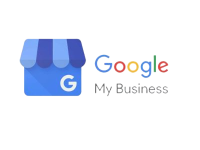
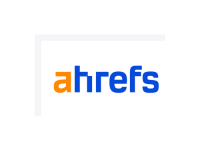
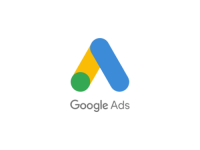

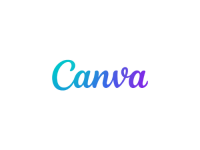
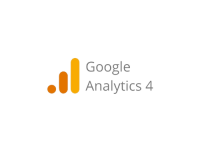
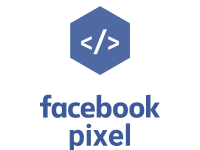
🎖️ Get Certified
🏅 Recognized by industry
💼 Shareable on LinkedIn
📄 Downloadable in PDF
🔒 ISO-certified or Govt. Verified (icons for trust)
Upon completion, earn a recognized certification to validate your skills and boost your credibility in job interviews, freelance pitches, and LinkedIn visibility.
Frequently Asked Questions
What is social media marketing and why is it important?
Social media marketing involves using platforms like Instagram, Facebook, LinkedIn, and X (formerly Twitter) to promote brands, engage audiences, and drive traffic or sales. It’s essential because billions of users actively use social media, making it a powerful channel for brand visibility, customer interaction, and business growth.
Who is this social media marketing course for?
This course is perfect for students, aspiring marketers, business owners, influencers, freelancers, and professionals who want to master social platforms for personal branding, lead generation, or business expansion.
Do I need any prior experience to enroll in this course?
No prior experience is needed. The course is beginner-friendly and walks you through the basics before diving into advanced content creation, campaign management, and analytics.
What topics are covered in the course?
The course includes platform-specific strategies (Instagram, Facebook, LinkedIn, YouTube, X), content planning and design, hashtag research, influencer marketing, ad campaign creation, social media analytics, and community management. You’ll also learn to use tools like Canva, Meta Business Suite, and Buffer.
What kind of projects will I work on?
You’ll create a professional portfolio by designing content calendars, running mock social ad campaigns, analyzing engagement metrics, building influencer outreach plans, and crafting branded posts.
Will I receive a certificate after completing the course?
Yes. Upon successful completion, you’ll receive a shareable certificate—ISO-certified or government-recognized—that you can display on LinkedIn and include in your resume or portfolio.
Request For a Demo Class
🎓 Request a Free Demo Class
Curious about digital marketing but not sure where to start?
Join our free demo session and experience expert-led, practical training that builds real skills.
✅ Live Interaction
✅ Beginner-Friendly
✅ Career & Course Guidance
📅 Limited seats – Book your free session now and take the first step toward your digital career!
